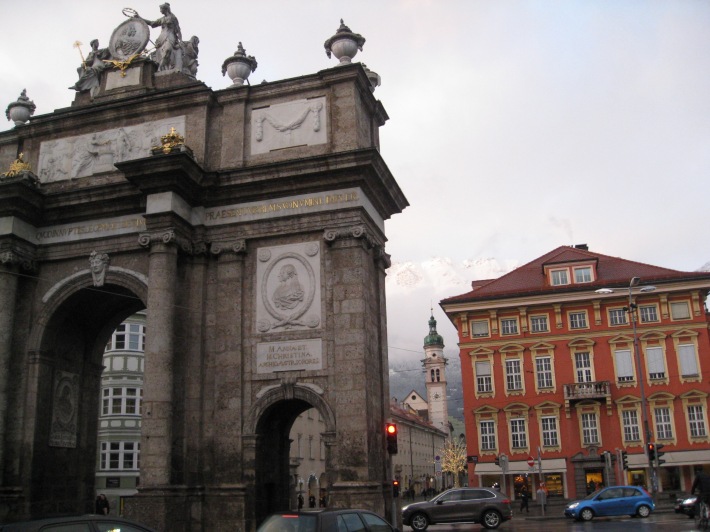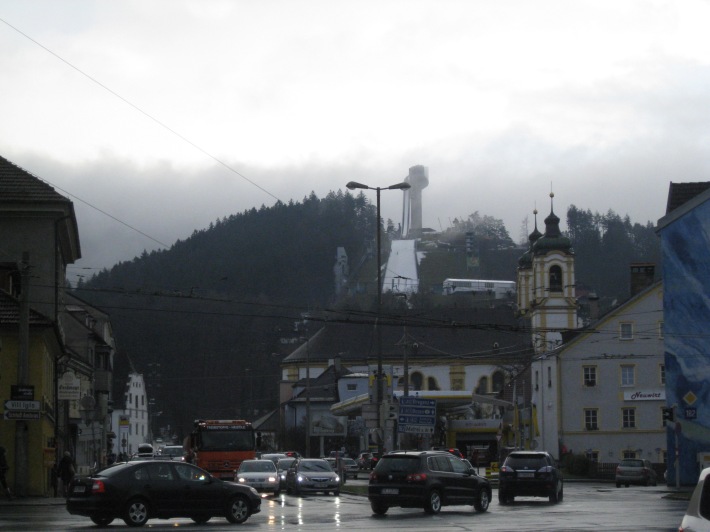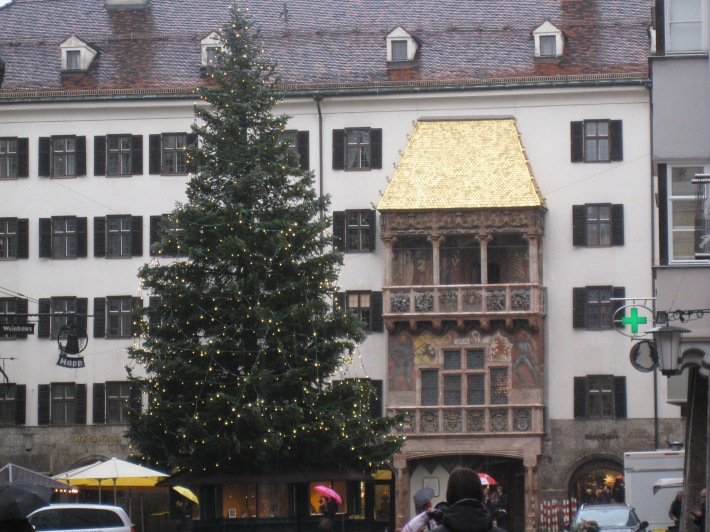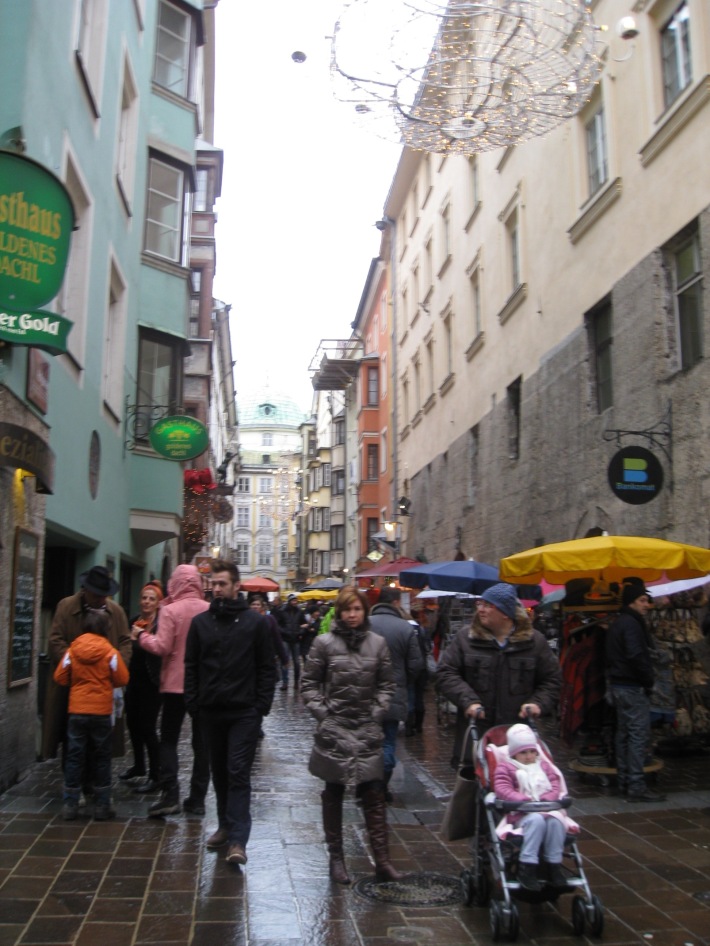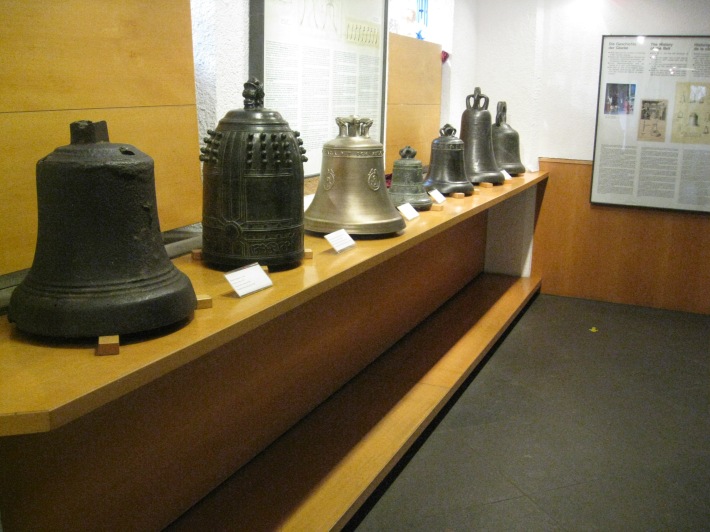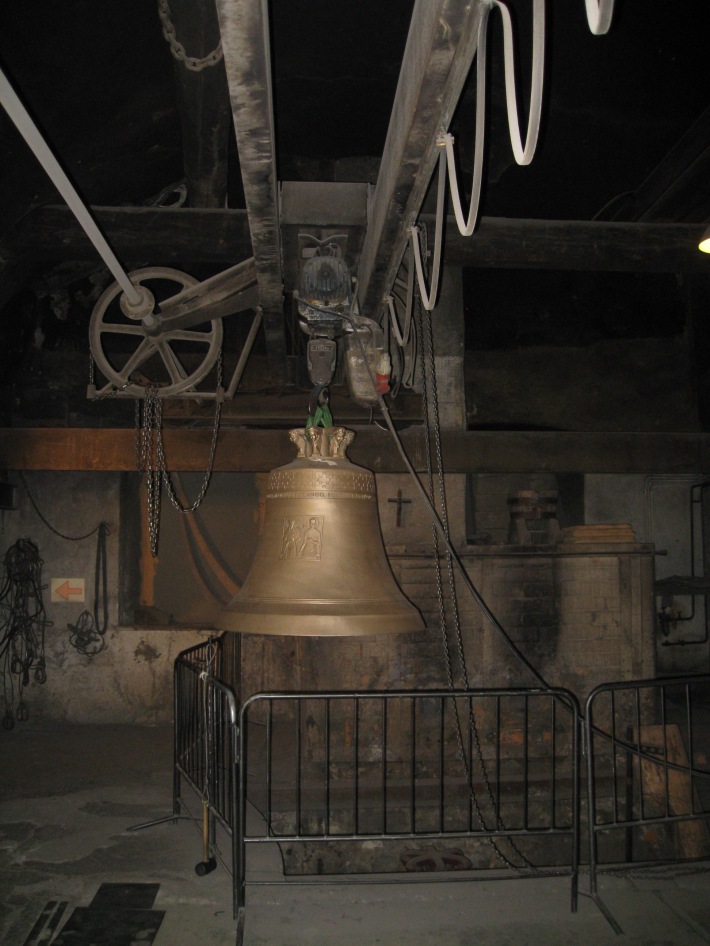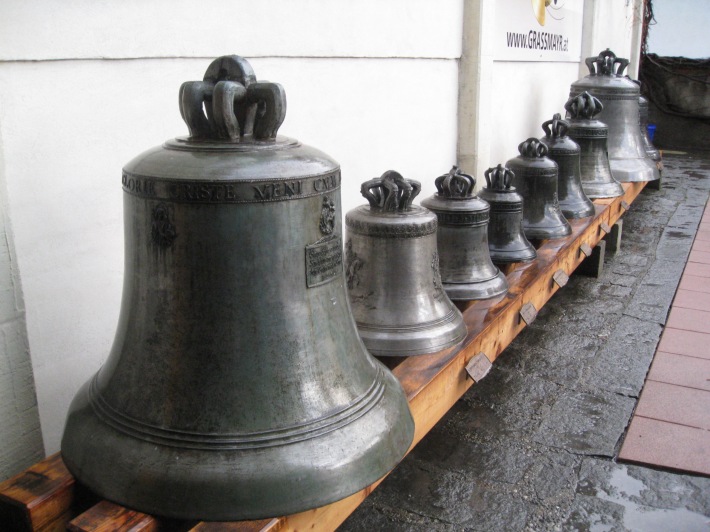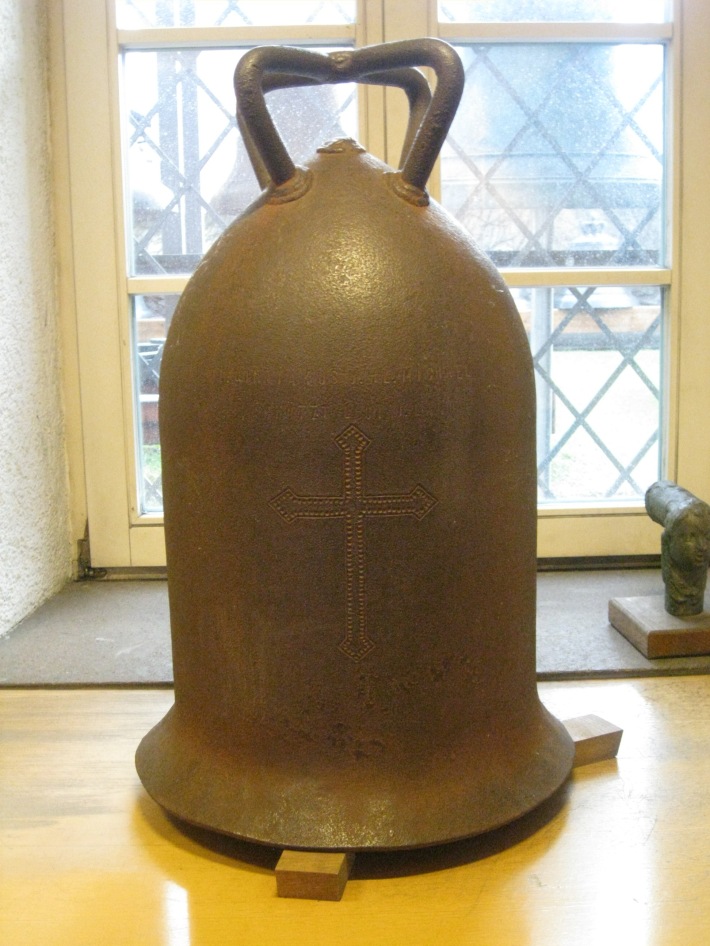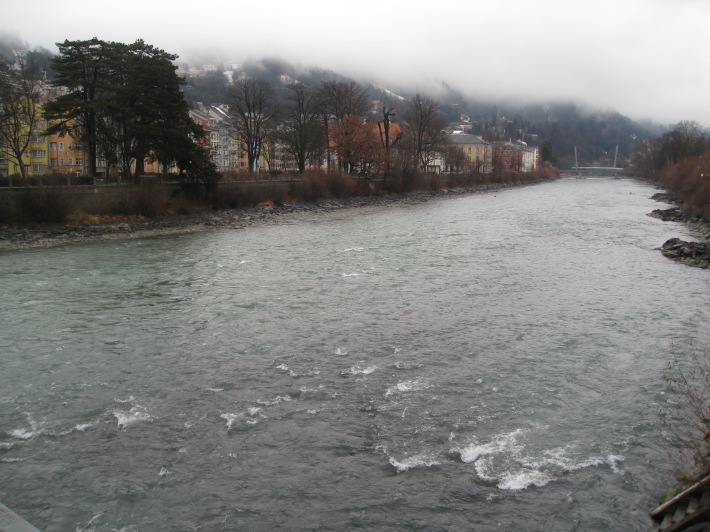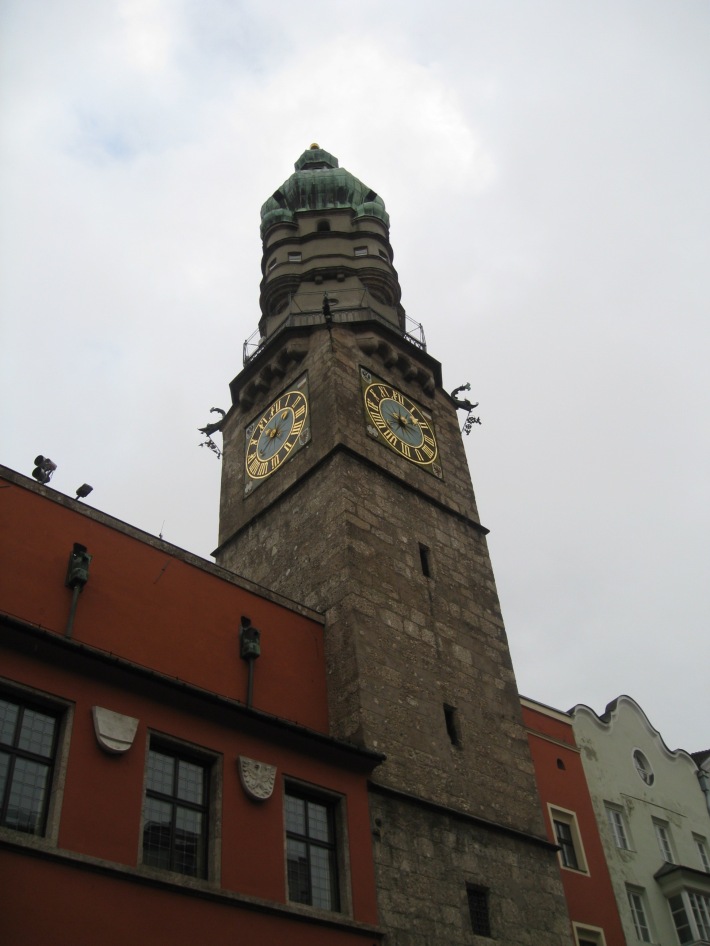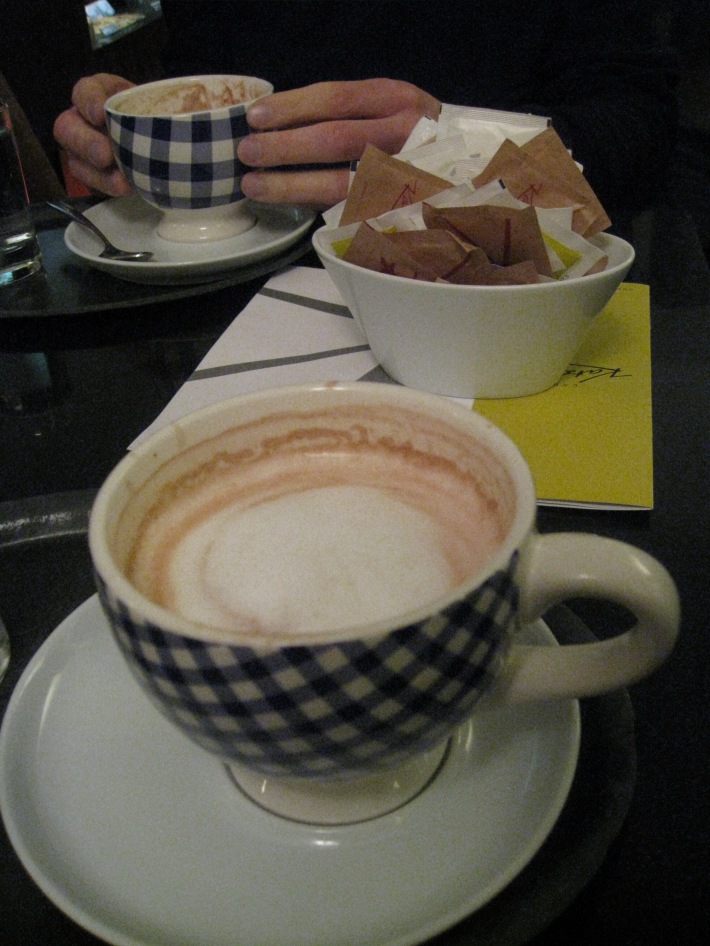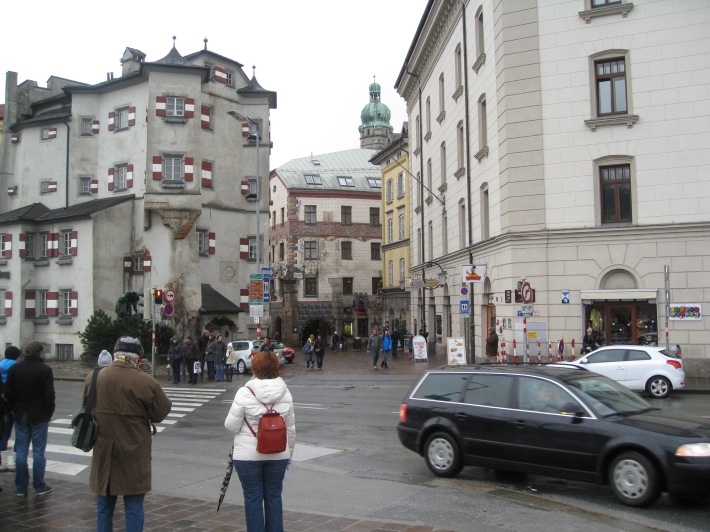I suspect G and I are the only two people ever to pass through Innsbruck’s “Triumphal Arch” with no plans to ski.
Not that there isn’t great skiing here – this is Innsbruck, after all. To start, there’s the Bergisel Ski Jump pictured in the distance here. This is the site of the biggest event on the ski jumping calendar, the Vierschanzen-Tournee (Four Hills Tournament).
For you architecture buffs, the Nordpark Cable Railway tower at the top of the ski jump was designed by Zaha Hadid.
Instead, we opted to do some sightseeing. The Golden Roof museum commands your attention. The roof is capped with 3,657 gold plated tiles!
The balcony under the Golden Roof was added in the year 1500 by emperor Maximillian I. The emperor enjoyed viewing the beauty of the Alps and the hustle and bustle of the Herzog-Friedrichstrasse (main street) below from this privileged position.
Next stop: the Grassmayr Glockenmuseum.
The museum explores 400 years of the Grassmayr family’s bell-making tradition.
The museum has many fine examples of Romanesque and Gothic bells on display.
As well as, a bell made from a bomb casing! I think it’s ironic that this one can make you an angel first, then insure you get your wings! Very efficient.
Later, a leisurely stroll along the River Inn towards the clock tower below…
reminded us it was time for a snack.
So, we popped into Cafe Katzung for a traditional apres-ski treat: the “best hot chocolate in town.”
As we continued to survey this Tyrolean gem we realized Innsbruck has so much more to offer than just skiing. It’s no wonder this city hosted the Olympic winter games in both 1964 and 1976.
Who knows? Maybe next time we’ll ski.
Arrivederci!
